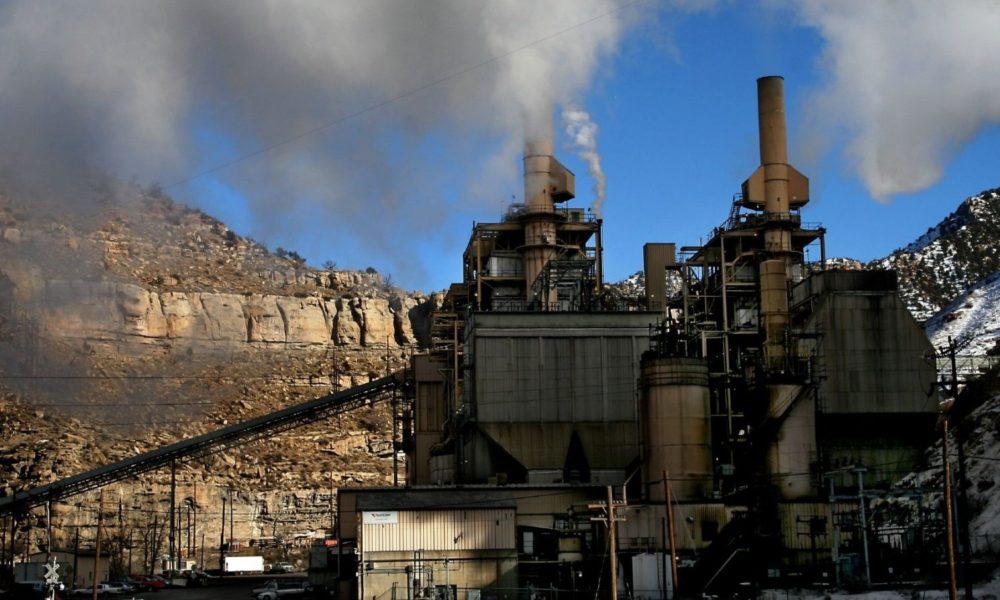For those following the intense negotiations on Capitol Hill, I don’t have to summarize the importance of passing the Build Back Better Act budget reconciliation package alongside the Infrastructure Investment and Jobs Act to meet such critical challenges as strengthening the social safety net and addressing climate change. House committees have drafted their version of the reconciliation package, and it contains critical provisions that would spur clean energy deployment as well as support environmental justice communities, rural communities, and energy transition communities. However, much more must be done to directly confront the negative impact a transition to clean energy would have on the workers and communities that depend on the fossil fuel industry for their financial well-being. Below I’ll talk about the draft reconciliation bill’s positive provisions as well as the missing elements that we are calling on Congress to include.
The Good
House committees have set levels of investment for existing programs that could facilitate the coming energy transition. Totaling $36.7 billion, here are the provisions I see as the most important:
- Although often overlooked, the US Department of Agriculture (USDA) has significant resources that can support energy transition communities. The bill includes $9.7 billion for grants or loans to rural electric cooperatives for debt relief and other costs incurred by closing coal plants and related transmission assets and replacing them with renewable energy systems or energy efficiency improvements. (This provision currently does not explicitly include support for workers, and it should.)
- Also included is $2 billion for a new Energy Community Reinvestment Financing Program at the Department of Energy. This program would extend the eligibility of Loan Guarantee Program projects to provide financial support to entities enabling low-carbon investments in energy communities. The financing explicitly supports displaced workers looking for new employment, community redevelopment, and accelerating environmental damage remediation.
- The package would appropriate more than $9 billion for the Commerce Department’s Economic Development Administration (EDA). That money includes $4 billion to create rural innovation hubs and $1 billion for economic adjustment assistance, of which $500 million is designated for energy and industrial transition communities—including coal, oil and gas, and nuclear energy communities. It also includes $500 million for public works projects and $4 billion for a formula grant pilot program at EDA called Recompete, which provides economic adjustment assistance to alleviate persistent economic distress and labor market dislocation.
- Included is $16 billion for the Labor Department’s Dislocated Worker Program, although this is much lower than the originally proposed $40 billion in combined funding for this program. The money would be used to provide grants to states to support career services and training programs for workers who have lost their jobs.
Additional investments include:
- Rural Development: $3.26 billion for the Rural Energy for America Program (REAP); $3.5 billion for Rural Partnership Program, which provides flexible grant funding to support job growth in rural communities and aid in economic recovery; $40 million for direct loans and loan guarantees for rural business development; and $430 million for grants for rural water and wastewater systems in persistently impoverished counties.
- Broadband: Access to broadband for rural communities is a critical component of facilitating economic development. On top of the more than $65 billion for broadband development included in the bipartisan infrastructure bill, the Build Back Better Act would invest another $4 billion in the Emergency Connectivity Fund.
- Conservation: $12 billion for the Civilian Climate Corps to support conservation projects on public lands, which could potentially employ dislocated workers.
- Mine Reclamation: Notably, the bipartisan infrastructure bill includes an infusion of $11.3 billion into the Abandoned Mine Lands Fund to support cleaning up mine lands abandoned prior to 1977 and extend the coal excise tax that supports the program for an additional 15 years.
- Education and Training: The package would fund a number of other programs that support education and training for different categories of workers.
This is by no means an exhaustive list of investments that could support energy transition priorities and needs, but it’s a good snapshot of where we are.
What’s Needed
The problem is that the investments cited above are not directed toward the specific group of workers affected by the shift to a clean energy economy. Additional support for directly affected workers and communities will be needed as we invest in programs designed to accelerate the transition. These include:
- $21.1 billion to provide wage replacement or differentials, health care benefits, and retirement or pension benefits to coal miners, coal-fired power plant workers, and oil refinery workers for five years. Note that a much broader set of workers will be affected, including coal transportation workers and support workers, as well as other fossil fuel workers as the nation move toward decarbonizing the economy.
- $3.7 billion for flexible educational and training benefits for dislocated workers, up to a four-year university degree.
- $7.3 billion to support post-secondary educational benefits for children of dislocated workers as a way to help alleviate generational poverty.
- Congress also could consider including a tax credit for utilities that retain workers as coal plants close, along with direct support for workers similar to the benefits provided in the Paycheck Protection Program established by the coronavirus aid package. These benefits would need to be designed so as not to create perverse incentives to keep coal-fired power plants running.
- Coal communities also will need direct support in the form of temporary replacement of tax revenue provided by coal mines and coal-fired power plants, which are often located in rural communities.
- The federal government must build on the initial work of the Interagency Working Group to create a federal coordinating body and ensure that federal agencies are aligned and easily accessible by communities. Another need is the creation of community transition hubs.
Congress must ensure that the full suite of investments outlined in the $3.5-trillion Build Back Better Act are included—and it must do more. Simply put, the burden of transitioning to a clean energy economy should not be borne by workers and communities that have sacrificed for generations to keep the lights on.

